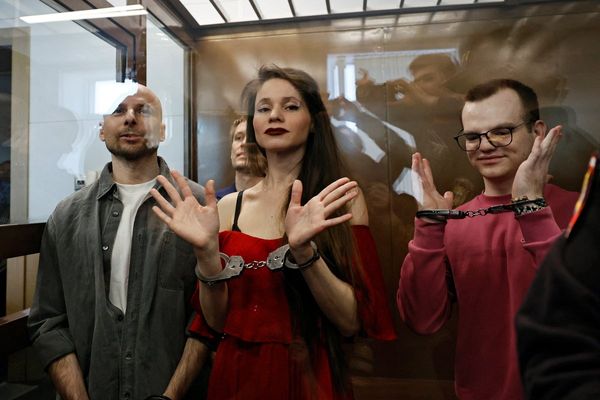

The buzz around Netflix’s new British show Adolescence has been immense — with critics calling it “compelling”, “memorable” and “brilliant”. It has a 99 per cent fresh rating on Rotten Tomatoes (a critic aggregator), and comparisons have been made to the 2024 hit Baby Reindeer.
In case you haven’t heard of Adolescence, it follows a 13-year-old boy called Jamie Miller (Owen Cooper) who is accused of murdering a female classmate called Katie. It’s not supposed to be a whodunnit, with the creators choosing to explore why he committed the crime. It touches on themes of incel culture, male violence, misogyny and rising knife crime in the UK.
One of the biggest talking points is the fact that the creators Stephen Graham and Jack Thorne wrote each one-hour episode to be shot in a single take. It’s a huge technical feat and a logistical nightmare — from getting a young actor to memorise so many lines, to finding locations near each other, or even attaching a drone mid-shot.
It also took a long time for the crew to film each episode successfully. Director Phillip Barantini told Deadline the first episode used take two, the second used take 13, the third used take 11, and the final episode used take 16.
I binged the show in one day to see what everyone was on about, but quite frankly, I felt like I wasted my time. Perhaps my expectations were too high, but it seemed like the creators used the one-shot technique as a way to gather press opportunities, rather than to enhance the story. I reckon the technical focus ended up harming the show instead of benefitting it.

The first three episodes were intriguing, and while I did enjoy the prolonged conversation between Jamie and the child psychologist (Erin Doherty), everything the one-shot technique had to offer could have been achieved with cuts.
While some believe it enhances the experience by showing us what’s playing out in real-time, I’d argue that the exact same result could be done with pacing. It’s still possible to show a story in real time with cuts, and it’s less distracting. In fact, I found the one-shot technique would take me out of the story rather than immersing me in the world.
There would be moments where characters would deliberately leave after a scene in an unnatural way so the camera could move to a different location. And of course, if something is shot in one take, your cinematography and lighting will never be as aesthetically pleasing as in a show where the crew can painstakingly set up each shot. Some camera mistakes like bumps and strange framing were left in as well, because it’s tough to have to reshoot an entire hour-long episode.
Plus, there were characters that saw their stories end abruptly after two episodes — because logistically, why would they be involved in the locations where the next two were set? It seemed like viewers had invested this time and energy into learning about these characters, before realising it was a waste of time. It’s almost like they were given extra screen time just because of where the one-shot episode was set.
For those who argue that a long one-shot take is the best way to draw out an emotional performance from the actors, they have a point. It’s probably easier to get into character when you’re not constantly resetting and cutting. However, I’d say there’s still the possibility of putting in long one-take scenes throughout the episodes — like the famous Children of Men scene — without committing to an entire episode shot in this way.

Episode four was the weakest and really highlighted the issues with prioritising a technical feat over the script. After the height of the child psychologist episode, it felt flat and uninspiring. It’s almost like we were supposed to be wowed that a camera rig could be attached to a van so the family could get to a second location, rather than being invested in what they had to say.
I’d be curious to know if, without the limitations of being locked to certain locations and characters, the writers would have been able to delve deeper into themes of misogynistic violence and incel culture. There seems to be so much left unsaid or explored, like we barely scratched the surface.
But then again, maybe Adolescence’s one-shot technique achieved exactly what it was supposed to — an easy marketing gimmick to skyrocket its popularity. It didn’t serve the story, but guess what? It certainly served Netflix well.
BBC reported that episode one topped the UK’s TV ratings during its first week, something no streaming show has ever achieved. 6.45 million people tuned in during this period, making it the largest TV audience for any streaming service in a week. It became the top-viewed show in the US as well, with Variety reporting that 24.3 million people viewed the show in just four days.
Most of the coverage and discussion online about Adolescence have mentioned its one-take technique, with viewers fascinated by how the creators pulled it off. So, while it didn’t necessarily add anything to the storytelling, there’s no doubt it added to the streamer’s numbers. Well played, Netflix.
The post Adolescence’s One Shot Technique Was Pure Marketing BS And It Didn’t Serve The Story appeared first on PEDESTRIAN.TV .







